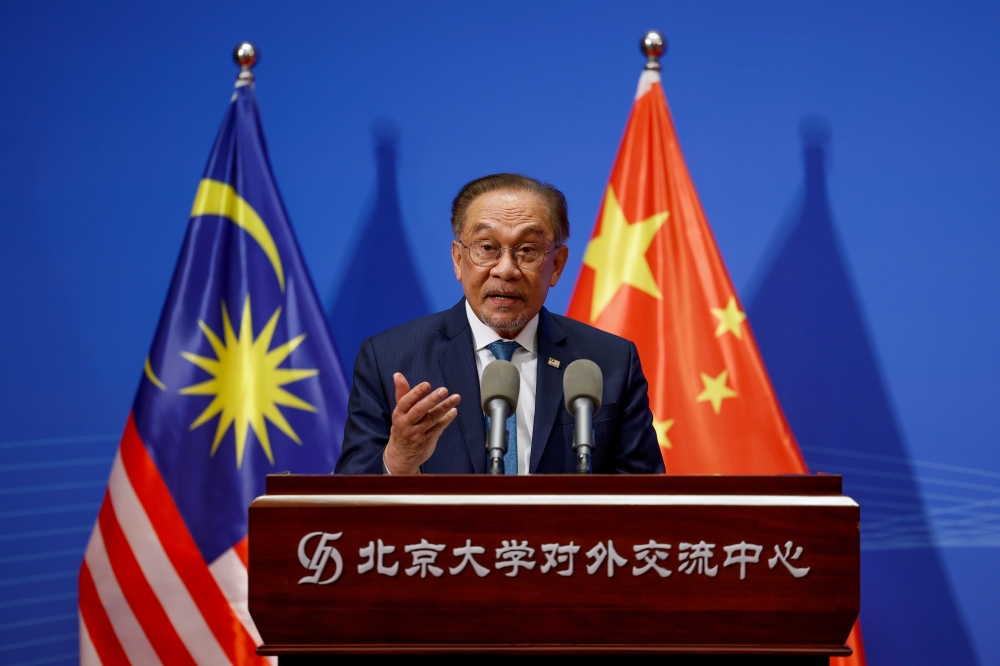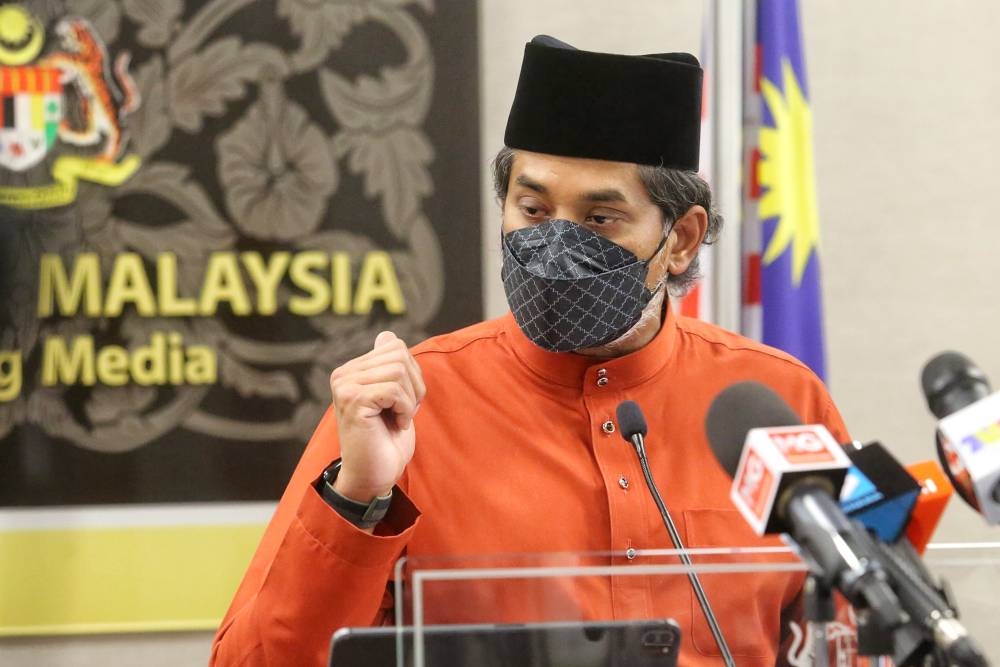JULY 16 — The issues of smoking, vape, and nicotine addiction in Malaysia have not seen much progress over the past decade.
The country’s smoking prevalence is currently at 21.3 per cent. 45 per cent of men across all age groups smoke. Women smokers hovered around 1 per cent. 17.4 per cent of children aged 13 to 15 will be smokers, and 1 in 10 of those aged younger than 12 have lit up a cigarette. For every RM 1 collected from tax imposed on tobacco, RM 4 is spent on treating those suffering from smoking-related diseases. Unfortunately, an estimated 27,000 people each year still prematurely lose their lives due to these conditions.
According to the National Health and Morbidity Survey 2019, 1.12 million people in this country are now using e-cigarettes. An industry survey indicated that around 68 per cent of male respondents vaped, compared to 32 per cent of women. At least 600,000 children between the ages of 11 and 18 have taken up vaping. The numbers of new vape users who are becoming addicted to nicotine, many of whom have never smoked cigarettes before, are increasing and starting younger each year. Adolescents can regularly be seen puffing away in restaurants, malls, and outside school premises, enough to make the police express their concern.
Somehow, despite the known and growing threat of nicotine addiction, Malaysians and their elected representatives have been lulled into giving up and thinking that nothing more can or should be done when it comes to cigarettes and e-cigarettes.
On April 14, 1994, the heads of the largest American tobacco companies were subpoenaed to appear before the US Congress. The seven CEOs and presidents refused to admit that they knew cigarettes were addictive, and emphatically stated that they did not believe nicotine was addictive. Today, we know differently.
A similar scene has been playing out recently in Malaysia. The top executives and representatives of both the tobacco and vape industries and businesses publicly claim that they were in support of a smoke-free world but opposed and disagreed that a generational ban on cigarettes and e-cigarettes would be effective or necessary. They now say that smoking is addictive, but vaping is not; that breathing in burnt tobacco fumes is harmful but inhaling nicotine in a vapour is safe.
As the tobacco industry begins to increase its presence in the e-cigarette market, it will soon be hard to differentiate between those selling cigarettes and those selling vape.
In a few weeks’ time, Health Minister Khairy Jamaluddin will table the Tobacco and Smoking Control Bill in the Dewan Rakyat for debate and to be voted on by the Members of Parliament. It has taken 12 years to get to this point.
What is being proposed in the upcoming Bill is not only bold and far reaching but also contains world leading measures such as a generational ban on cigarettes and vape.
This is a piece of legislation that if implemented properly and effectively, will help save the lives of thousands of Malaysians each year. It will make a serious dent in smoking prevalence and regulate vape which has gone out of control. This Bill has captured the interest and concern of people and governments in this region and made news around the world. For once, Malaysia is making international headlines for the right reasons.
But there is tremendous opposition and pushback to the proposals. Most naturally come from industry stakeholders, business owners, smokers, and vapers. But some worries have also come from Members of Parliament reflecting their own individual concerns as well as those of their constituents.
Slippery slope and personal choice
A common strategy used by the tobacco and vape industry to oppose and undermine control measures is the ‘slippery slope’ or unintended consequences argument. It suggests that a policy such as the generational ban would set a troubling precedent that would then be applied to other products such as sugar, fast food, butter, and even alcoholic beverages. The argument is intended to create fear and hesitation among policy makers.
But tobacco is a unique product. It cannot be treated similarly or compared to sugar or alcohol. When used properly as intended, it is a fact that smoking will kill half of its consumers. The impact of vaping is still not fully understood. However, what is known is that increasingly more people, especially younger users, are coming down with e-cigarette or vaping use-associated lung injury (EVALI) due to long term use and adulteration of liquids being heated and inhaled.
Alleged infringement of personal choice and freedoms, and terms such as “nanny state” are also used as part of the “slippery slope” argument. The claim is that smoking, and vaping are adult choices and do not justify state intervention. However, this ignores the long-known fact that most people start smoking when they are adolescents and teenagers.
Vaping, which is supposedly intended for and limited to adults trying to quit smoking and who are addressing their nicotine addiction, is now being taken up by primary and secondary school children, as well as university students in Malaysia. As long as vape remains unrestricted and unregulated, the journey to nicotine addiction begins in individuals as young as 10 years old.
The same argument of personal liberty is used to imply that a person can start or quit when they no longer wish to smoke or vape. The reality is quite different. Quitting is hard. It takes smokers at least 30 attempts, and relapse rates are high. The increasing presence of vape users at myQuit or smoking cessation clinics speak volumes of a new group of people wanting to be treated for their nicotine addiction. More and more smokers and vapers are desperate to quit.
Loss of revenue
A straw man argument is being promoted by those who oppose the upcoming Bill. The claim is that the generational endgame aims to completely ban cigarettes and vape for everyone beginning from 2023. This is untrue and is deliberately misleading to create fear, distract from the merits of the proposal, and raise unreasonable opposition.
What is being proposed is a prohibition against the sale and use of cigarettes and vape by those born from 2005 onwards, beginning with those turning 18 next year. For everyone else, they will be able to continue buying and selling their products at retail outlets, and smoking and vaping in permitted locations. For them, nothing will change.
Will businesses which depend on the sales of tobacco products and vape be affected and lose money? Yes. It is likely that as older customers change habits, quit, or die over the years, they will not be replaced by new people who are addicted to nicotine. In time, businesses such as retail outlets, pubs and restaurants adopting smoke-free and vape-free policies will adapt and thrive as they have in the UK and Europe.
Illicit market
Much of the data surrounding the illicit tobacco market originates from industry-funded research. The tobacco, and now vape, industries routinely use the findings from these commissioned reports to argue and conclude that every control policy, without exception, will lead to increases in smuggling and growth of illicit products.
Though the black market in illicit tobacco and vape does exist in Malaysia, these reports when compared with independent sources, consistently overestimate the availability, and scale of the problem. This inadvertently results in policymakers and law enforcement becoming worried and hesitant in adopting policies such as this upcoming Bill which the industry players claim could allegedly exacerbate the situation.
The industries argue that they are the victims of the illicit market, emphasising the role of counterfeit cigarettes and vape devices, which escape taxation and regulation. However, they have never stopped benefiting from the illicit market. Recent studies found that around two-thirds of illicit cigarettes worldwide came from the tobacco companies themselves. Fewer than one in ten were actual counterfeit products.
Is there a black market in illicit tobacco and vape products? Yes. Is its existence due to strict and harsh regulations? Not likely. An illicit market will nevertheless emerge when regulations fall behind and enforcement is inadequate. Do we need to invest in better regulatory measures and improved enforcement? Absolutely.

Harm reduction
Malaysia has grown to be the largest vaping market in the Southeast Asian region. The vape industry is estimated to be worth RM 2.3 billion ringgit, with 330 manufacturers and importers and 3,000 retail shops, employing around 15,000 people.
The industry has touted heat-not-burn (HNB) tobacco products and vape as allegedly safer alternatives to cigarettes and as a less harmful approach to smoking. It has also made a claim to vape being a means to quit smoking. Instead, what is happening is the introduction of new nicotine delivery devices with high nicotine levels, which are unregulated, unrestricted, and available to all.
16 mg per ml of nicotine works out to approximately 1.6 per cent nicotine. Most cigarettes contain between 1 and 3 mg of nicotine. However, in Malaysia, vape liquids in disposables can be found to have between 1 per cent, 3 per cent, and 5 per cent strengths. In the UK and Europe, the maximum strength permitted is 20 mg, or 2 per cent. The lethal dose of nicotine for adults is about 60 mg or 6 per cent.
Disposables available in the Malaysian market range from 200 — 1600 puffs with different nicotine strengths. They are priced as low as RM10. As a measure, 200 puffs are equivalent to 13-30 cigarettes. Studies show that people take an average of around 140 puffs per day.
With prices lower, and nicotine content higher than a pack of cigarettes, it is not surprising that 4.9 per cent of the Malaysian population are now estimated to be vaping. However, the problem of nicotine addiction is now on the brink of escalating beyond anything previously seen.
The vape retail business now counts users who have never smoked cigarettes, young women turned off by cigarettes as distasteful and disgusting, teenagers and even children as new customers.
Indeed, there have been stories of people for whom vaping has been successful in helping them quit smoking cigarettes. But there are worryingly more people coming forward newly addicted to nicotine, desperate yet unable to quit vaping, and those who are also continuing to smoke cigarettes, becoming dual users. Both smokers and vapers are now actively accessing nicotine replacement therapies such as nicotine patches and gum instead for help with their addiction.
Many of us still remember the days when smoking was permitted on flights, and a time when TV advertising of cigarettes was everywhere and invasive that we can still remember the jingles, songs, and slogans (e.g. gaya, mutu, keunggulan) decades later.
“Today’s teenager is tomorrow’s potential regular customer,” said a 1981 Philip Morris memo.
Sponsorship of certain sports such as football, snooker, and motor-racing of interest to youth were synonymous with tobacco brands. Music festivals, concerts and other lifestyle events were sponsored by the industry. Through these entry points, smoking was sold to young people as being cool, glamourous, sexy, and sophisticated. Due to Malaysia’s commitment to the WHO Framework Convention on Tobacco Control (FCTC), all of this was gradually removed and was thought to have been long gone.
Today, because it is unregulated and unrestricted, the vape industry is currently doing what has been prohibited for tobacco companies under the FCTC: vape has now replaced cigarettes in public promotions, advertising, and sponsorships. Today, you could be forgiven for thinking that we are back in the past. Same messages, images and strategy but just a different nicotine delivery device.
Vape needs to be regulated as strictly as tobacco and imposed with appropriate taxes.
Public health measures are often not popular or may even be controversial when introduced, especially if they are perceived to be taking away liberties, lack compassion and intolerance, or simply being imposed upon. Examples include gun control which have reduced gun deaths, seat belt laws which brought down road fatalities and injuries in accidents, and most recently, mask mandates slashed new cases, hospital admissions, and deaths during the Covid-19 pandemic. Much of which was disliked and lacked support in the past, but today we take for granted.
One day, we will look back at the harm and suffering caused by smoking and vaping, the lives lost prematurely, the billions spent, and wonder why it has taken us decades to act.
But to get to that point, we need to be bold, think out of the box and try something that will finally make a difference.
We need a dramatic shift in the environment to denormalise smoking and vaping, to reduce the appeal and make such products less accessible. It cannot be business-as-usual. If not now, when? Who should we depend on to make the tough decisions concerning tobacco and vape? Should we just kick the problem down the road for other parliamentarians, or another government to solve? Implementing the generational endgame will lock the gate against new smokers and vapers. No one wants their daughters and sons, grandchildren, and loved ones to become addicted to nicotine, suffer from chronic diseases such as cancer, and lose their lives prematurely.
There are few times in our lifetime when we are called upon to step up and do the right thing. This is one of those times.
During the upcoming debate on the Tobacco and Smoking Control Bill, I ask that our Members of Parliament be on the right side of history and vote yes in support of building a better healthier future for everyone in Malaysia.
* Azrul Mohd Khalib is the head of Galen Centre for Health & Social Policy.
** This is the personal opinion of the writer or publication and does not necessarily represent the views of Malay Mail.




















